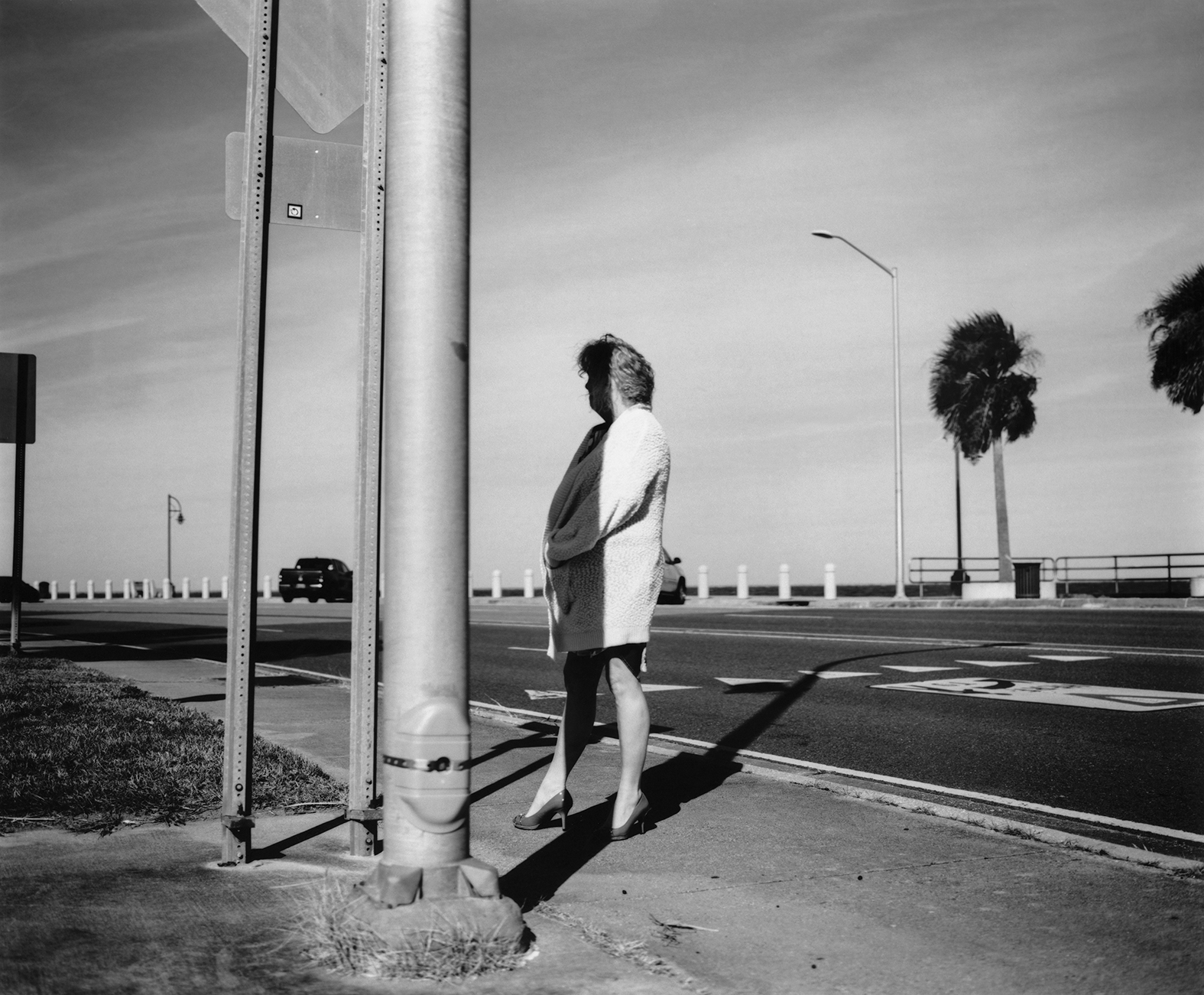From Yorgos Lanthimos to David Lynch, Jim Jarmusch to Harmony Korine, a growing number of filmmakers are turning their hand to exhibitions of visual art. What could go wrong?
Yorgos Lanthimos’s Poor Things (2023) has been dubbed ‘an awe-striking visual feast’, Wes Anderson named ‘one of America’s most unique cinematic voices’, and Sean Baker’s Oscar-winning Anora (2024) likened to ‘a rich Tchaikovskian symphony’. These film directors, along with Jim Jarmusch, David Lynch, Tim Burton, Harmony Korine and others, are what we might call auteurs. The term arose from François Truffaut’s 1950s essays in French magazine Cahiers du Cinéma, which lionised directors who marked their films – mostly made for larger studios – with enough of their individual personality to be considered authors of a unified body of work. Today, amid the churn of cookie-cutter cinematic releases, the auteur draws a crowd precisely because of who they are and their particular brand of filmmaking, which audiences come to know and expect – Lanthimos’s self-conscious, surreal worldbuilding, for example, or Anderson’s colourful whimsy. These immediately recognisable aesthetics often reap dividends: Poor Things made $117 million worldwide, Tim Burton’s Beetlejuice Beetlejuice (2024) a whopping $452m. The auteur, then, straddles a fine line. He (it is almost always he) must maintain his artsy reputation and distinctive voice – typically seen as independent from and untarnished by Hollywood’s demands – even while his big budget, studio-produced work succeeds at the box office.
Over the past few years, several of these directors have shown their artwork in commercial galleries and even institutions – hoping, perhaps, to cement their status as cinematic outsiders and, ultimately, artists in their own right. The results, though, conform to the lowest common denominator of white-cube gallery shows: their primarily wall-hanging artworks regurgitate stylistic quirks – either from the director’s own oeuvre or the work of prior canonical artists – demur to any ideological convictions (or ideas at all) and rely on name recognition to entice a crowd. In this way, these filmmakers’ visual art feels like an embodiment of New Yorker critic Pauline Kael’s infamous 1963 takedown of auteur cinema: ‘The ideal auteur’, she writes, ‘is one who signs a long-term contract, directs any script that’s handed to him, and expresses himself by shoving bits of style up the crevasses of their plots.’ That the galleries exhibiting this work aren’t demanding more from these directors is one more result of the artworld’s Achilles heel – money – which can confuse profits from film-buff private collectors for genuine public engagement. What remains, then, are the emperor’s new clothes: when nobody seems either willing or able to tell them the truth about their half-baked work, auteurs ultimately prove correct the worst accusations of their past and present critics.
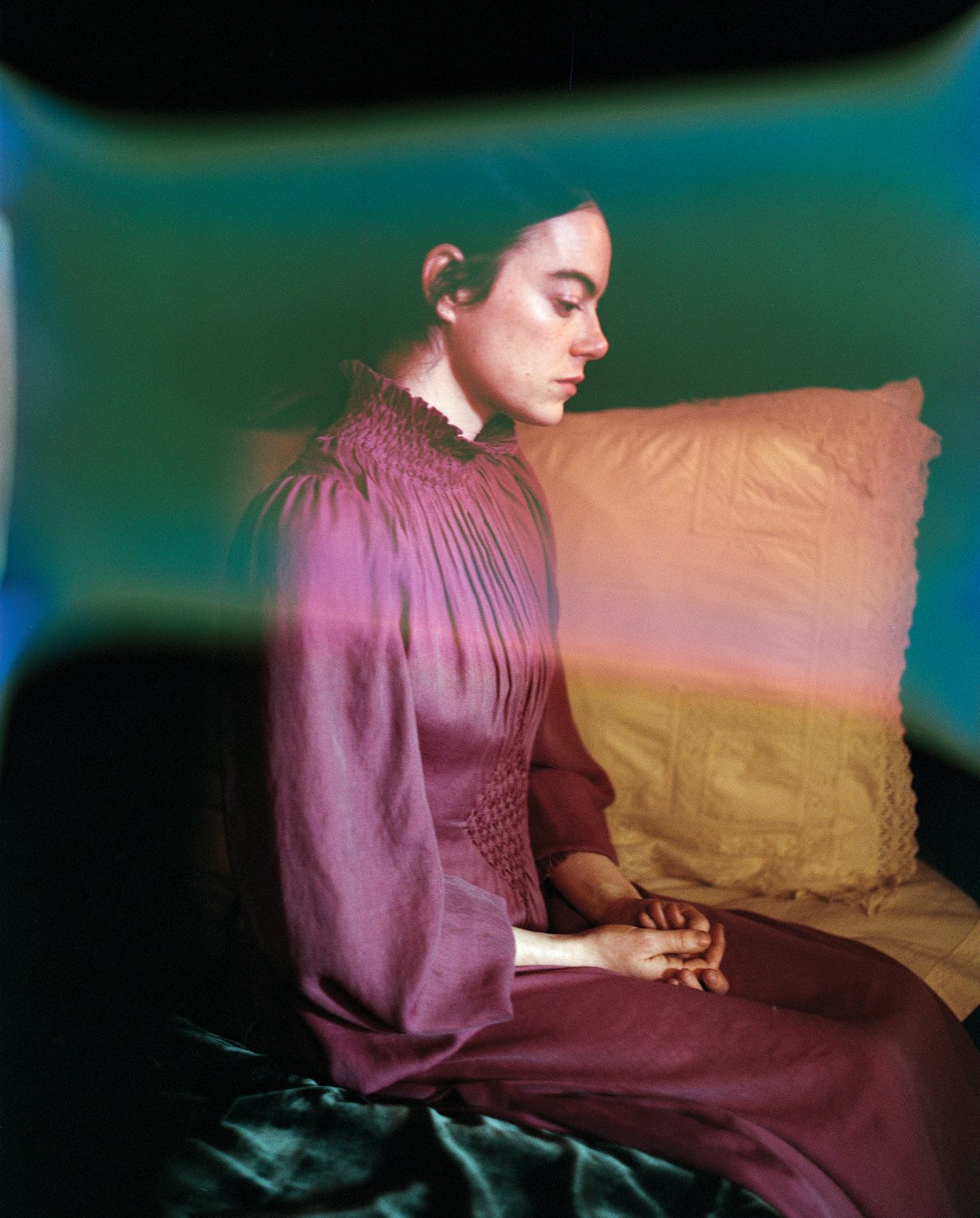
‘Lanthimos doesn’t just recycle…’ notes one review of the Greek director’s black comedy film Kinds of Kindness (2024), ‘he also repeats…’ Indeed, his first visual art exhibition, Yorgos Lanthimos: Photographs, currently on display at Webber Gallery in Los Angeles, displays 66 monotonous photographs, mostly snapped on filmsets or shooting locations – sometimes with cast members from his recent movies – across two large white-walled galleries. The accompanying exhibition notes declare Lanthimos ‘one of the most distinctive auteurs in contemporary cinema’, and this debut exhibition a reinforcement of ‘his position as a unique and singular visionary in contemporary visual culture’. The vast majority of the framed prints, however, look like toothless rip-offs of notable twentieth-century photographers, although Lanthimos conspicuously doesn’t mention any sources of inspiration in his exhibition materials. Visual references to Lee Friedlander’s and Robert Frank’s groundbreaking roadside photos and Diane Arbus’s empathetic views of American outsiders are plain to see, but his versions lack the watershed examinations of visuality his predecessors were known for. Lanthimos’s Nola 7 (2022) – a black and white highway landscape, shot through a reflective car window with the outline of Lanthimos’s face in the foreground – is an almost exact copy of Frank’s Chauffeur, London (1951), but while Frank visually illustrates the class division between himself, positioned behind the reflective window of a vehicle or store, and the shadowed chauffeur outside his car, Lanthimos’s iteration is nothing more than an empty visual pastiche. These photographs remain overly reliant on a viewer’s interest in their ‘behind the scenes’ appeal, a fact that Webber Gallery exploits: one back room, painted green, is reserved almost entirely for requisite shots of celebrities. As the New York Times chief film critic Manohla Dargis wrote of Poor Things: ‘Its design is rich, its ideas thin’.
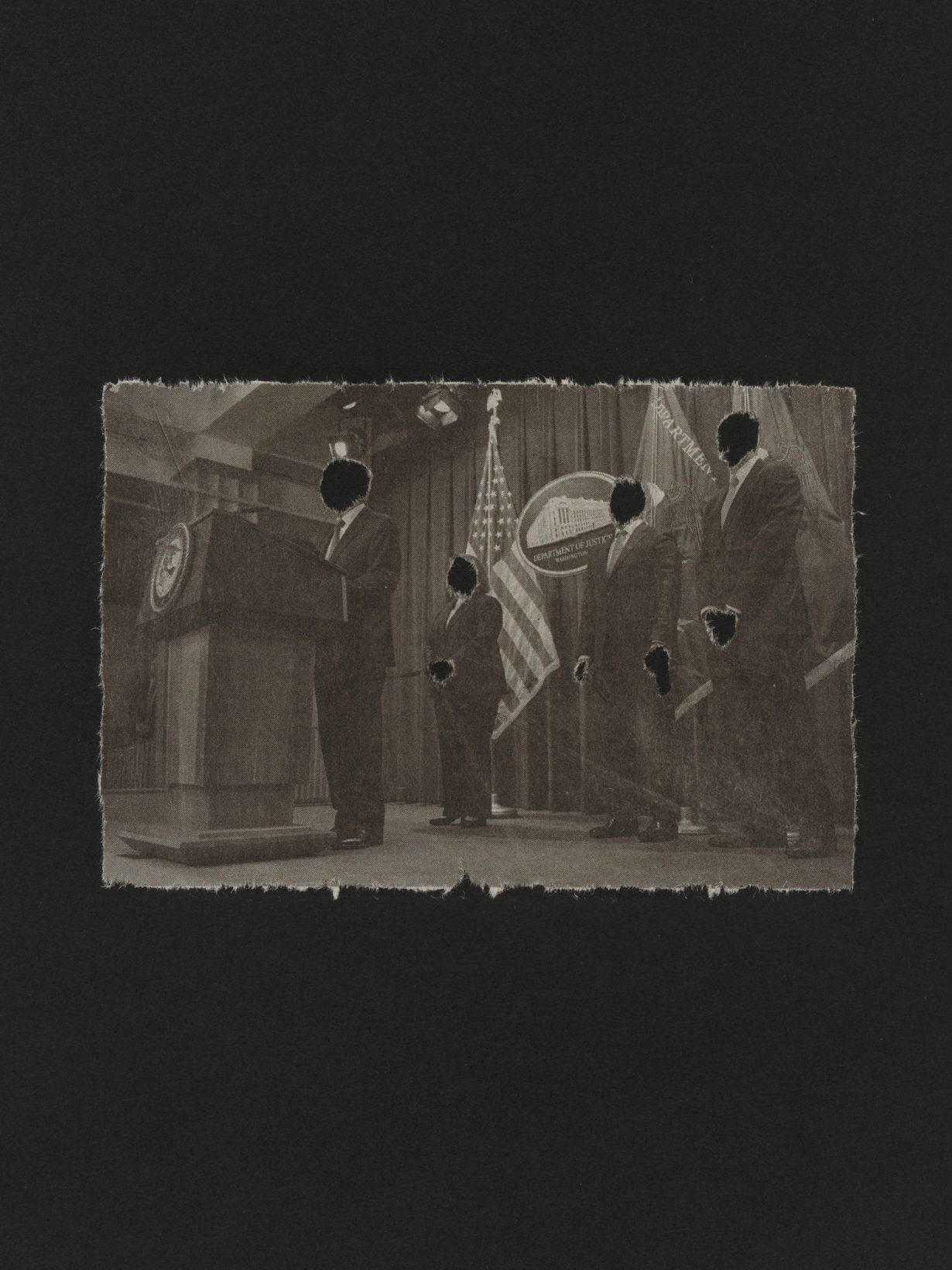
Across town at James Fuentes this spring, Jarmusch’s exhibition some more collages displayed 31 nearly identical wall-hanging, mostly greyscale artworks, each produced using the exact same technique. Jarmusch tears photographs from newspapers, pastes them to a black background and cuts out the faces of each figure pictured (one exception features a photo of ‘some kind of billionaire, AI entrepreneur guys’, as Jarmusch put it in an interview with the Los Angeles Times). Their dry, abrupt style mimics Jarmusch’s deadpan vignettes in his comedy films Night on Earth (1991) or Coffee and Cigarettes (2004), but each artwork’s rote gestures are stultifying in a way that feels more cliché than incisive: in one untitled work, faceless government officials appear at a podium, American flags hanging behind them. Transposed into a gallery setting, Jarmusch’s aesthetic, like Lanthimos’s, becomes merely a comatose version of an earlier artist’s work: John Baldessari’s 1980s ‘dot portraits’, for example, similarly decontextualise photographs and cover any faces with bright circles reminiscent of price tags – an erasure that subtly implies the depersonalisation of mass consumerism. Jarmusch’s works have only the superficial gloss of Baldessari’s thoughtful commentary, none of the rigour, and not even a shred of Jarmusch’s trademark humour. ‘I don’t know what they mean,’ he admitted in the same interview.
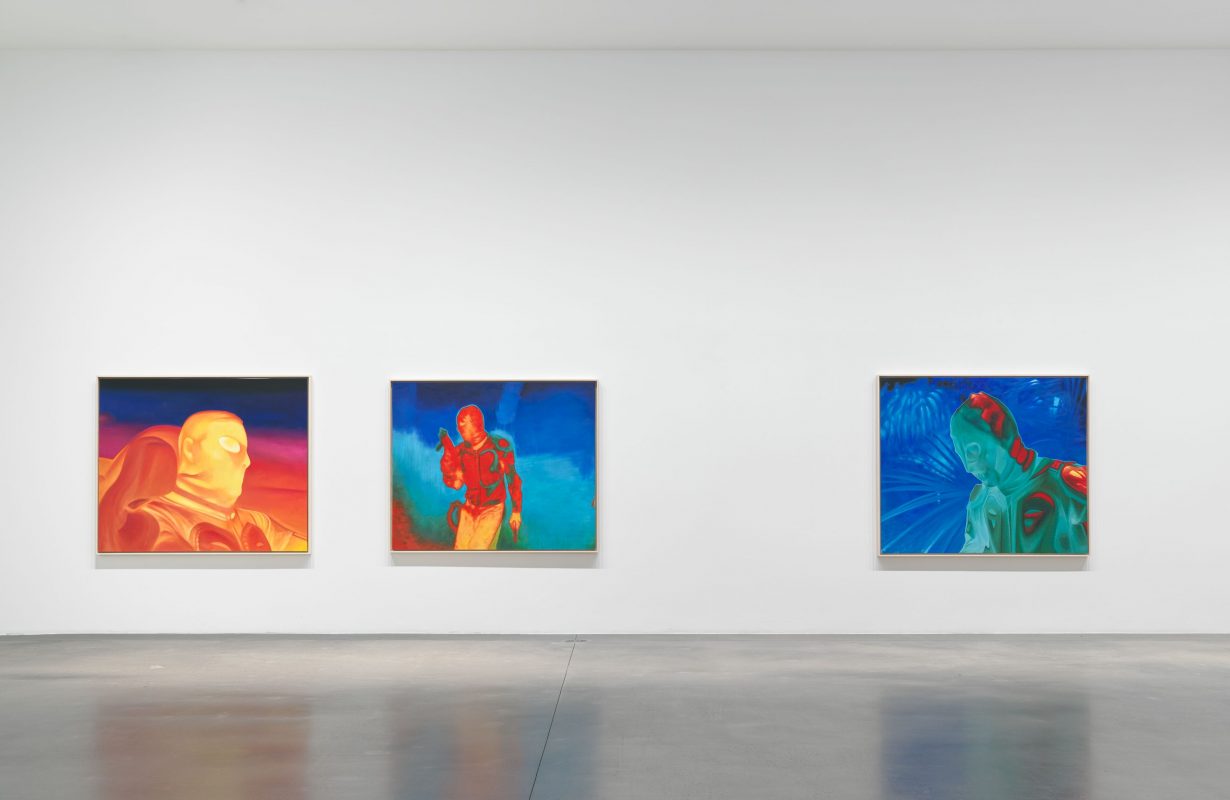
In Kael’s 1963 essay, she remarks that critics can mistake stylised auteur films for ‘masterpieces’, when these movies actually ‘reveal the contempt of the director for the audience’, leaning so heavily on a director’s ‘mastery of tricks’ that only the most feverish acolyte would be able to cull value from it. Auteur art seduces viewers with similar deceits: Korine’s 2024 exhibitions at Hauser and Wirth’s LA and London locations feature artworks that are essentially paint-by-numbers of film stills from Korine’s 2024 movie AGGRO DR1FT, and Burton’s illustrations, which were exhibited at LACMA in 2011, seem to try to pass off Corpse Bride (2005) storyboards as paintings, as though the discipline were merely a rest stop on the way to a movie. Lynch’s artwork, represented by mega-gallery Pace, is less direct than Korine’s or Burton’s in its use of cinematic material, but the results still attempt to conjure his films’ dreamlike tone. In this format, though, Lynch’s style is more cartoonishly jumbled than surreal or uncanny: in Hands Up, Cowboy! (2020), a painted assortment of objects – a Vaseline tub, cowboy, rooster’s head and the scrawled titular phrase – fail to cohere or even acknowledge their own incoherence. One can imagine, though, a Lynch superfan seeing shreds of 1999’s off-kilter Western The Straight Story in his disjointed canvas.
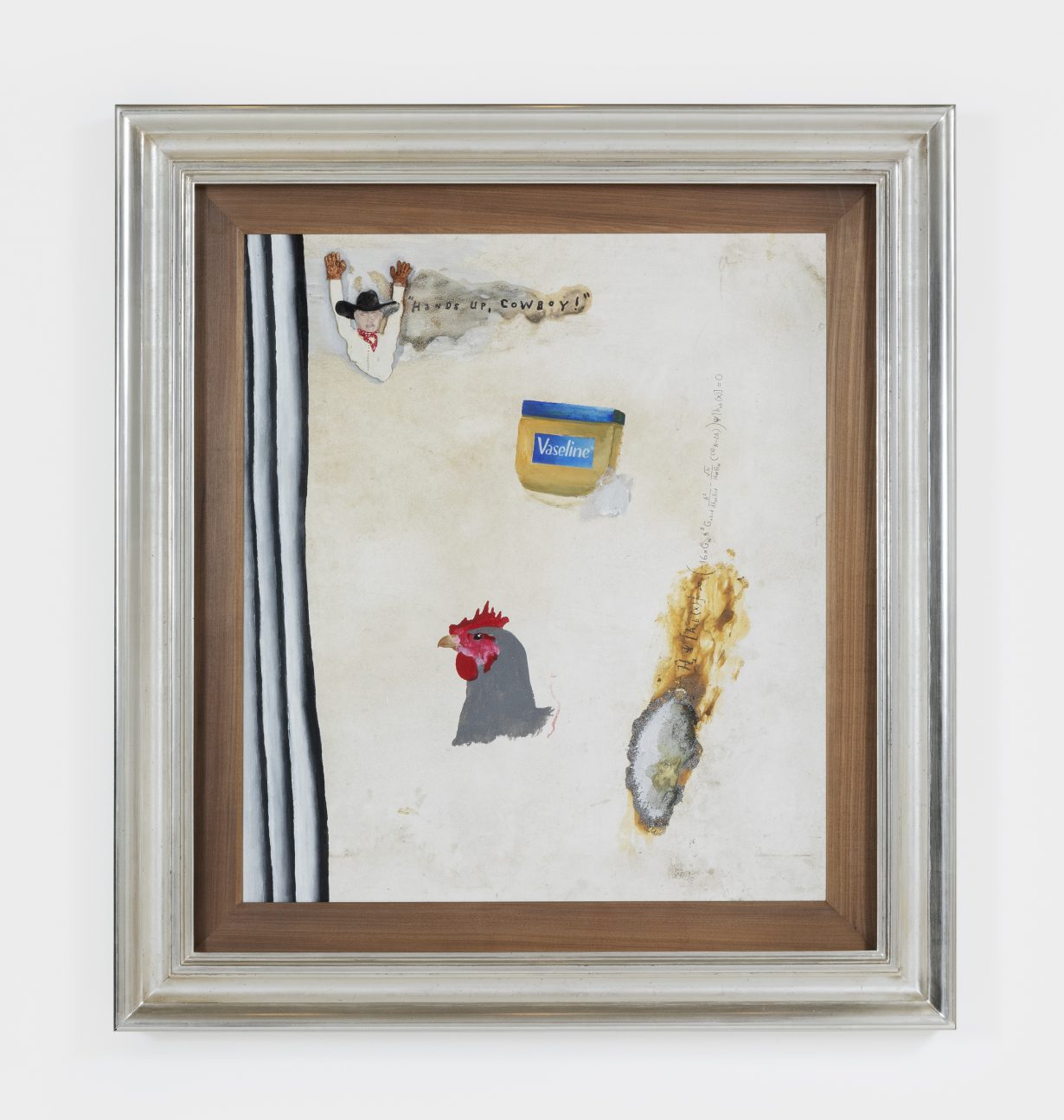
The creative impoverishment of much auteur art is closely aligned with the fate that can befall many directors today, who, under even greater pressure to offer a legible ‘brand’ to studio executives obsessed with existing IP like Barbie or Minecraft, might confuse art for artifice, and style for substance. During market contractions for both Hollywood and the artworld – film industry jobs fell by 26 percent from 2022 to 2023, and art auction sales declined by 33 percent last year – it can be tempting to sympathise with auteur directors and their gallerists. These art exhibitions serve the aims of both parties: they increase gallery footfall, help film directors seem more like the passionate, independent creators that audiences want them to be and make money for all parties.
But why should we laud directors simply for stretching into new mediums, and celebrate galleries for looking beyond their roster – while still banking on reliably safe bets? In Peter Wollen’s 1972 postscript to his influential essay ‘The Auteur Theory’, he makes a compelling case for the artwork one can and should expect of the auteur instead. ‘A valuable work’, Wollen writes, ‘… is one which challenges codes, overthrows established ways of reading or looking, not simply to establish new ones, but to compel an unending dialogue, not at random but productively.’ In galleries – and perhaps in movie theatres, too – many contemporary auteurs seem blithely unaware of Wollen’s appropriately high bar. It’s not too much to want better art from these artists – or, at least, to want any art at all.
Claudia Ross is a writer based in Los Angeles
